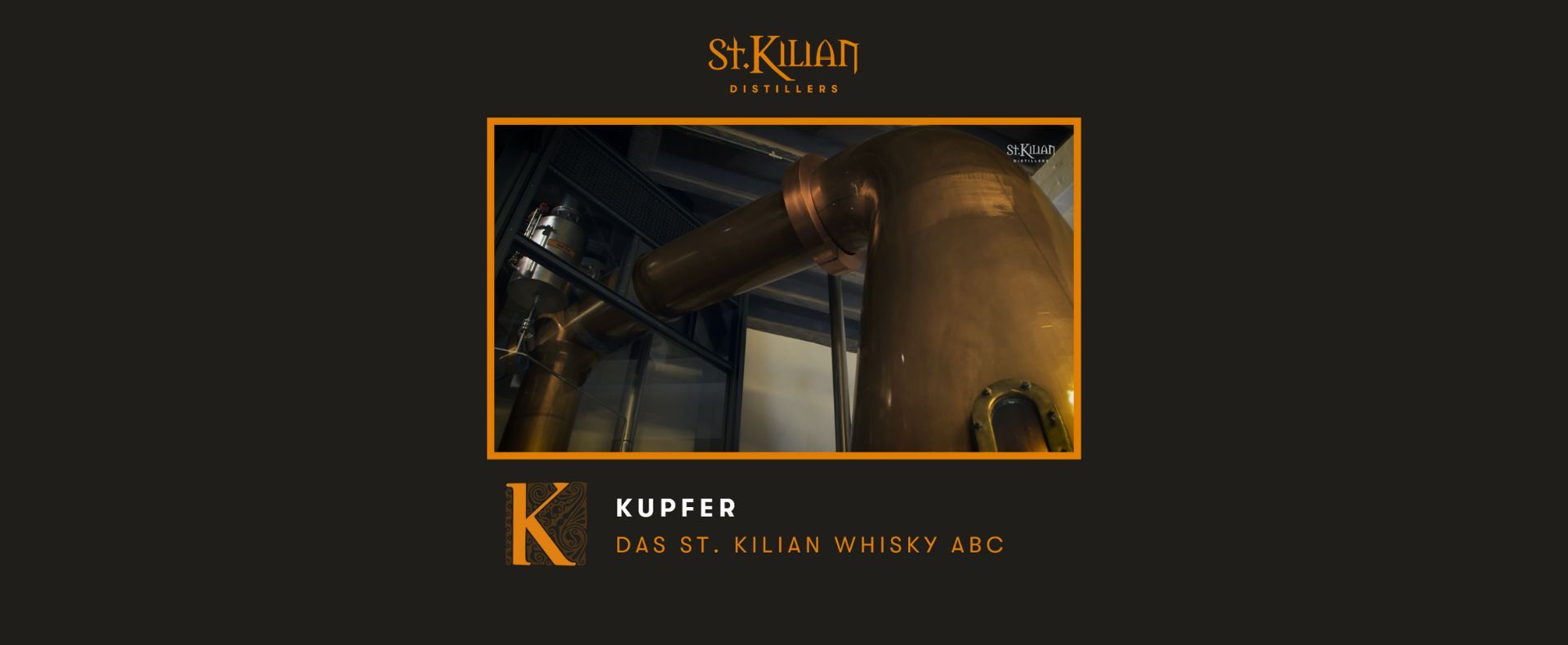K - like copper

What is copper?
Copper is a chemical element with the symbol Cu. It is 29th in the periodic table and belongs to the heavy metals. Copper has been known for many millennia. Along with gold, silver, mercury, lead, iron and tin, copper is one of the seven elements of antiquity.
Where does the name come from?
The Latin name for copper is derived from "aes cyprium", which means ore from Cyprus. This referred to the origin and extraction of the element in ancient times.
What are the properties of copper?
Copper is a soft metal. This makes it easy to process. If it is brought into a desired shape by working it with a hammer, copper hardens under this mechanical stress and retains its shape. In addition, copper has high electrical conductivity and has good resistance to corrosion. In addition, the metal has excellent heat conduction properties, which the early whiskey distillers took advantage of and manufactured stills from elemental copper.
What other special property does copper have?
An interesting and important property of copper with regard to distillation in the production of whiskey is its high affinity for sulfur. Copper loves sulfur! Both elements form a close bond with each other, whereby salts, so-called copper sulfides, are formed by chemical reactions.
Where do the various sulfur compounds come from?
These mostly organic sulfur compounds, with which copper reacts chemically in the later production process of whiskey, originate from the fermentation of the wort. During alcoholic fermentation, these are formed by the yeast in addition to ethanol, carbon dioxide and an abundance of different aroma substances - such as esters, alcohols, aldehydes or ketones. The reason for this is, among other things, the proteins (albumen) in the barley, which contain the sulfur-containing amino acids cysteine and methionine. These amino acids are partially utilized by the yeast cells as nutrients and the various sulfur compounds are released into the wort as "waste products".
What are the properties of sulfur compounds?
The sulfur compounds mentioned are mainly hydrogen sulfide, ethanethiol, dimethyl sulfide, dimethyl disulfide and dimethyl trisulfide, which are characterized by their mostly unpleasant odors of rotten eggs, onions, garlic, steamed vegetables, sweat and burnt matches. These "aromas" are perceptible to the human nose even in the smallest quantities and are completely undesirable when enjoying a spirit such as whiskey.
Where are these sulfur compounds removed?
During distillation in the copper pot stills, these volatile sulfur compounds pass into the vapor phase, rise up into the gooseneck of the still, and react there with the hot copper surface. In the process, both substances enter into a chemical reaction and salts are formed, the copper sulfides. These stick to the wall of the copper still, are no longer volatile and thus do not enter the distillate. This means that during the double distillation in the wash and spirit still, a large proportion of the unpleasant-smelling organic sulfur compounds in the wash are removed by the copper. However, not all sulfur compounds are undesirable. In small quantities, they can certainly make a positive contribution to the complexity of the matured whiskey.
What role does copper play in barrel aging?
During the maturation of the spirit into whiskey in wooden barrels, copper also plays a major role, as it accelerates the formation of esters. These chemical compounds are formed by reactions of acids with alcohols and are characterized by their predominantly fruity aromas. Copper thus catalyzes this ester formation, which can also take place at the high temperatures during distillation inside the pot still.
Are there also disadvantages?
In addition to the many advantages of copper, there is one significant, albeit indirect, disadvantage. The stills wear out. This is because each distillation in the pot still consumes some of the noble metal. As a result, the thickness of the copper plate, which is initially between 4 mm and 6 mm, becomes thinner and thinner over time, with the result that the still, or part of it, has to be replaced. Given the high cost of materials and the time-intensive, manual production of a copper still, such a replacement represents an enormously high cost factor for the distillery.
Can copper be replaced by stainless steel?
To avoid the disadvantage of wear, there were attempts to replace copper stills with stainless steel. However, the resulting distillate from stainless steel stills tasted about the same as steamed broccoli, onion and celery. This is because, unlike copper, stainless steel is unable to eliminate the organic sulfur compounds in the wort, with their aromas often described as vegetal, grassy, foul, brackish and rubbery, by salt formation. This allows them to enter the distillate unhindered.